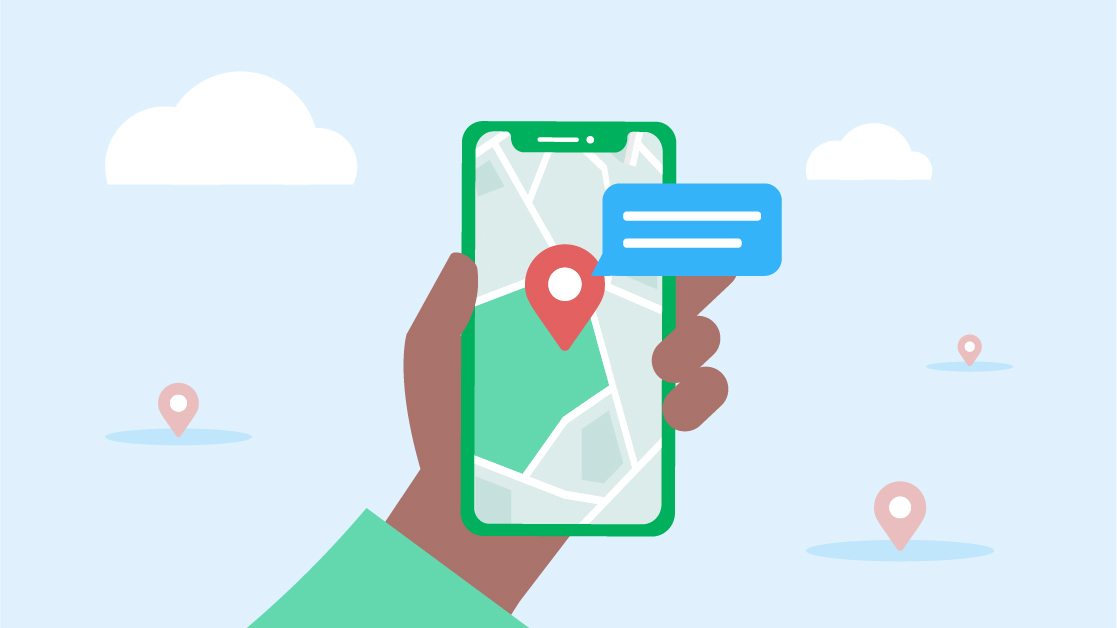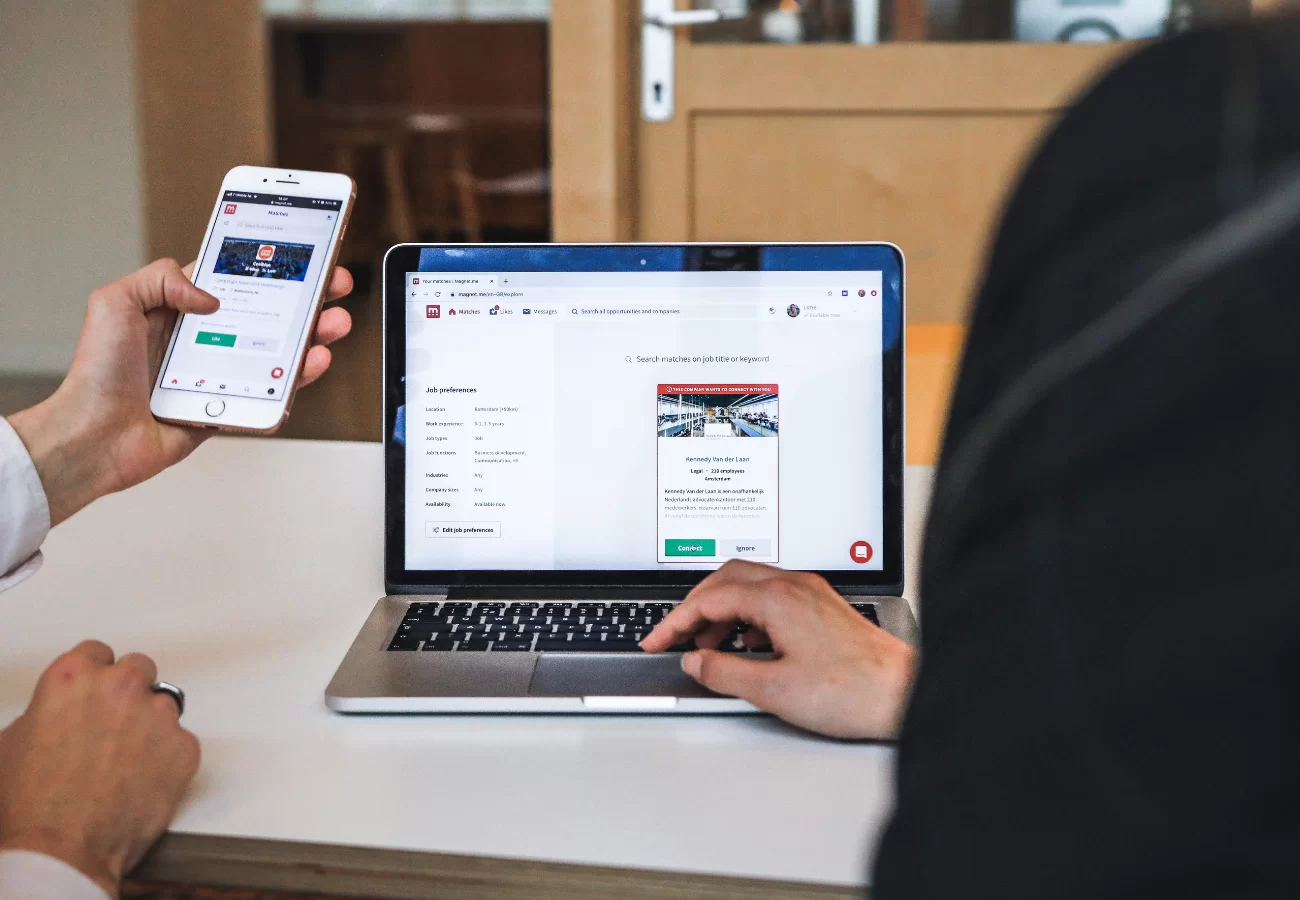As a rule of thumb, if you run a business that relies on local trade, SMS Geofencing could take your text message campaigns to new heights — ultimately helping you get more sales and improve the customer experience. For beginners in business marketing, geofencing is a virtual boundary or perimeter that can be set up around a particular physical location. Thus, it’s a vital marketing tool.
Geofencing can be used with an SMS program, push notifications, social media, or mobile applications. This technology is used by businesses for various purposes — to track vehicle fleets and manage drones, provide real-time delivery updates, engage visitors at organized events, and provide location-based marketing. It’s also used for location-based monitoring and insights.
For example, to track when people enter and leave a building. With that in mind, geofencing is a technology that’s become important for businesses. Organizations must discover how this technology can make a big difference in marketing and business growth strategies to help grow their business. It may sound uncomfortable, but it’s one of the most effective ways to reach your audience.
Businesses must embrace SMS marketing. In this article, we’ll explore a specific part of SMS geofencing and see how it’s changing how companies do sales marketing automation in business. We’ll start by explaining what geofencing is and why it matters. Then, we’ll focus on SMS geofencing, showing you how it works, where it’s used, and how it can help businesses connect with customers.
Know What SMS Geofencing Entails And How It Powers Location-Based Marketing
At its core, geofencing is like setting up virtual boundaries around real places. Imagine drawing an invisible line around your home, and when someone crosses it, you get a notification on your mobile or computing device. That’s geofencing in a nutshell. Now, SMS Geofencing is a particular type. Instead of just getting notifications, it uses text messages to talk to you when you’re in a specific area.
Here’s the thing: regular geofencing mostly sends alerts or triggers actions when you enter or leave an area. SMS geofencing takes it up a notch. It sends you text messages based on where you are. So, if you’re near a store, you might get a text with a special offer. It’s like getting personalized messages depending on where you are. This technology operates by setting up geographical boundaries.
They are often called “geofences.” These geofences can be created using either location-based coordinates or radius-based parameters. In most cases, location-based tracking coordinates define precise geographical points on a map, while radius-based geofences are circular boundaries with specific radii. Once these geofences are established, SMS messages are triggered per event.
These events include entering a geofence, exiting a geofence, or spending a specific amount of time within a geofenced area, known as dwell time. However, it’s crucial to highlight that user consent and permissions play a pivotal role in SMS geofencing. Obtaining user consent is not just a courtesy; it’s a necessity. Respecting privacy regulations and obtaining explicit user consent is essential.
Why SMS Geofencing Is An Essential Tool In Your Business Marketing Process
Most of us know that our phones can track our location from GPS to sharing location on social media. From a marketing perspective, knowing when your customers are close by enables you to use a variety of localized marketing tactics to grab their attention — and this is where geofencing comes in. While business owners can’t track their customers (don’t panic), you can trigger an action.
Usually, this can happen when an individual’s phone enters a particular location. With that in mind, have you ever been to a new city and found yourself scrolling through local ads? Welcome to geofencing. As mentioned, SMS Geofencing is commonly used as a marketing and advertising tactic to attract customers to a brick-and-mortar business, such as a store. Learn more about its role:
For example, a business can send in-app notifications on its app when a user who has that app on their device enters a geofenced area. Its profound safe access helps ensure SMS geofencing technology’s responsible and ethical use. Technically, this commitment to privacy compliance ensures that SMS geofencing remains a valuable tool for customer engagement based on location.
SMS geofencing allows you to send text messages to customers when they enter a specific geographical area. But you can’t just text anyone and everyone within a geofenced area (aside from being financially impossible and ineffective, that would also be illegal). You must obtain permission from customers to access their location data for geo-tracking and sending SMS geofencing campaigns.
Increase Customer Engagement
- Sending Relevant Offers and Promotions: SMS geofencing helps empower a strategic business marketing plan to send timely and tailored offers and promotions to customers in proximity to specific locations. This ensures that the messages are highly relevant to the customer’s immediate context, increasing the likelihood of engagement.
- Targeted Messaging for Local Events: Businesses can use SMS geofencing to promote local events and activities, sending event-specific messages to nearby users. In customer-centric marketing strategies, this approach enhances engagement and fosters a sense of community involvement.
Improved Customer Experience
- Providing Location-Specific Information: SMS geofencing allows businesses to deliver location-specific information to customers. For example, a restaurant can send its menu when a potential diner is nearby, ensuring that customers can access relevant information exactly when and where they need it.
- Personalizing Interactions Based on Location: During a Computer Telephony Integration (CTI) process, personalization is a cornerstone of excellent customer experience. SMS geofencing empowers businesses to personalize interactions by considering the customer’s location. Whether it’s a special welcome message when a guest checks into a hotel or an exclusive offer at a retail store, location-based personalization enhances the overall customer experience.
Increased Foot Traffic And Sales
- Driving Customers to Physical Stores: For brick-and-mortar stores and E-commerce businesses, SMS geofencing is a powerful tool for driving foot traffic. Businesses can attract more visitors and potential buyers by sending enticing offers or notifications when customers are close to their stores.
- Encouraging Impulse Purchases: SMS geofencing has the unique ability to prompt impulse purchases. Customers who receive a compelling offer near a store are more likely to make unplanned purchases, boosting sales and revenue.
Incorporating SMS geofencing into marketing and customer engagement strategies can yield substantial benefits, enhancing engagement, improving customer satisfaction, and ultimately contributing to business growth.
Some Topmost Common Examples And Notable SMS Geofencing Use Cases
As mentioned, SMS Geofencing offers a range of substantial benefits for businesses looking to connect with their customers in a more targeted advertising campaign and effective manner. A geofence is a fancy word for a virtual border around a physical area. When mobile users enable their location services, applications can track where they are. Users move about in the physical world.
By doing so, they may enter locations where brands advertise their products and services. It sounds scarier than it is. In reality, we’ve been using location-based services for years. However, with 85% of U.S. citizens having a smartphone, the technology has adapted to being mobile-centric. In other words, SMS geofencing helps you send text messages when a customer enters a specific location.
To send out bulk SMS messages, you’ll first need to choose an SMS provider that offers geofencing as an add-on to SMS marketing campaigns. The next step is to get consent from your customers to a) send SMS marketing campaigns and b) contact them by text with location-based marketing offers. The customer must permit you to use their location data before sending them information.
The best way to get consent for location-based SMS marketing is by opting into text campaigns. You might do this by displaying a statement on how you intend to use subscriber data following the mobile phone number field on a contact form and asking subscribers to tick a checkbox to opt-in to this type of marketing. After collecting subscribers, you’ll want to set up your geofence.
The general rules for every business using messaging tools:
- You must get consent to send SMS marketing messages to your customer. If you are new to business text messaging, you first learn that all of your subscribers must opt-in to receive text messages from you. One of the quickest and easiest ways to obtain consent is by setting up a keyword (pictured below). A keyword is a specific word or phrase that, when texted into your allocated number, signs up the customer to receive your marketing SMS. If one of your opt-in methods is a keyword, you can trigger a message immediately to request your customer’s location. This, as you’ll see in point 2, is critical.
- You must get permission to use their location. Once your customer has opted in, you must request permission for their location. Location is not automatically enabled via message, so to track your subscribers, they need to enable it.
Geofencing enables developers to create a virtual boundary around a location. Businesses can trigger an action when mobile users enter that location. These actions include sending a location-specific marketing text message through SMS geofencing. SMS geofencing presents various applications across various industries, empowering businesses to engage with their target audience.
Retail And E-commerce
- Sending Discounts to Shoppers Near Stores: Retailers can use SMS geofencing to send exclusive discounts and promotions to potential customers near their physical stores. This approach encourages shoppers to visit the store and purchase.
- Alerting Customers About Nearby Product Availability: E-commerce businesses can leverage SMS geofencing to inform customers about the availability of products they have been browsing online at nearby physical locations. This bridge between online and offline shopping can drive sales and enhance customer convenience.
Hospitality And Restaurants
- Notifying Patrons of Special Offers When Near a Restaurant: Restaurants can utilize SMSs to send special offers and promotions to passersby or potential diners nearby. This real-time push notification can entice customers to dine in or order takeout.
- Sending Mobile Check-In Reminders to Hotel Guests: Hotels can enhance the guest experience by sending SMS reminders to guests as they approach the hotel. This includes check-in instructions, room details, and exceptional amenities, ensuring a smooth and personalized arrival experience.
Events and Entertainment
- Promoting Concerts, Shows, and Sporting Events: Event organizers can create geofences around event venues and use SMS geofencing to promote upcoming concerts, shows, or sporting events to individuals in the vicinity. This boosts event attendance.
- Providing Event-Specific Information to Attendees: During events, SMS geofencing can deliver real-time updates, schedules, and location-specific information to attendees, enhancing their overall event experience.
Local Marketplace Businesses
- Encouraging Visits to Local Businesses with SMS Offers: Local businesses, such as coffee shops or boutiques, can attract nearby customers by sending offers and discounts. This drives foot traffic and fosters a sense of social hub community engagement.
- Collecting Reviews and Feedback Through Geofencing: After users visit a local business, SMSs can prompt them to leave reviews or provide customer feedback about their experience. This helps businesses improve their services and reputation.
These use cases exemplify the versatility and effectiveness of SMS geofencing across various industries, allowing businesses to connect with their audience in meaningful and contextually relevant ways. Equally important, there’s another significant reason Uber, Starbucks, Pizza Hut, and more use SMS geofencing. It’s one of the most effective ways to increase marketing performance.
Pizza Hut tried sending a text promotion to customers within half a mile of its restaurants. The result? A 142% increase in sales. That isn’t just a fluke, either. Markedly, Factual’s Location-Based Marketing Report established various metrics.
They are as follows:
- Almost 9 out of 10 marketers attribute higher sales, customer base growth, and engagement to location-based marketing.
- 82% of marketers currently use some location data, and 94% plan to use it in the future.
- Mobile is the top channel for leveraging location data.
- Marketers believe the quality of data, e.g., specific location or demographic or a customer, is two times more important than the following purchase criteria: ease of use and price.
Leveraging geofencing for marketing is simply about contacting your customers at the right time and place. Knowing their location means there’s no need to guess when or if it’s the best time to contact them.
The Simple Steps For Implementing An Effective SMS Geofencing Strategy
Remember, SMS Marketing, or text message marketing, is a form of direct adverts campaign that uses text messages to communicate with customers. It is a highly effective way for businesses to reach their target audience, as text messages have a 98% open rate and are typically read within minutes of receipt. It’s a powerful technique for businesses to connect with their target audience.
On the one hand, once you have both types of permission from your customer, you’re ready to go. Be that as it may, your SMS provider must tap into the customer’s GPS or RFID signals to track your customer’s location. As messages do not permanently have location information switched on, this ‘location lookup’ process is necessary to determine when your customer enters the geofence.
This means that instead of tracking your customers 24/7 — costly and time-consuming — you can optimize your chances of successful SMS geofence marketing by choosing when to look up their location. For example, if you’re a coffee shop using geofencing, you’ll want to check customers’ locations in the morning and at lunchtime. You can then send out a local promotion to customers.
On the other hand, if you’re a sushi restaurant, you would check customer locations just before lunch and dinner to catch potential customers when they’re in the mood for food and your geofence. For beginner webmasters, implementing SMS geofencing requires careful planning and execution to ensure that it effectively engages your target audience and delivers the desired results.
Geofencing Tools
- Popular SMS Geofencing Tools: Begin by researching and identifying popular SMS geofencing tools or platforms available in the market. This step involves assessing various options’ features, capabilities, and pricing.
- Considerations for Selecting the Right Solution: When choosing an SMS geofencing solution, consider factors such as the size of your audience, your marketing budget, and your specific use case. Evaluate whether the platform aligns with your business goals and allows scalability as your needs grow. Additionally, check for compatibility with your existing systems. Again, utilize big data in cybersecurity to optimize safety features.
Setting Up Geofences
- Defining Geofence Parameters: Defining the parameters of your geofences is a critical step. Determine the geographical areas you want to target and set up geofences accordingly. Be precise in specifying location-based coordinates or defining the radius of your geofences based on your campaign objectives.
- Mapping Geofences Accurately: Accurate mapping ensures that your geofences cover the intended areas. Utilize mapping tools and Geographic Information Systems (GIS) to create precise boundaries. Regularly review and adjust geofences to reflect location changes or campaign strategies.
Crafting Effective SMS Messages
- Writing Engaging and Relevant Content: The content of your SMS messages is crucial to their success. Craft concise, engaging messages directly relevant to the recipient’s location. Tailor your content to match the context of the geofence trigger. For example, if promoting a store, include a compelling message offer or incentive for immediate action.
- Timing and Frequency of SMS Notifications: Timing is everything in SMS geofencing—schedule SMS notifications to be sent at the most opportune moments when users are likely to be receptive. Avoid excessive messaging, as this can lead to user frustration. Strike a balance by considering user preferences and respecting their privacy.
Successful implementation of SMS Geofencing hinges on selecting the right tools, defining precise geofences, and delivering engaging and timely SMS messages. By following these steps, businesses can harness the full potential of SMS geofencing to connect with their audience meaningfully and drive desired outcomes. There’s a way to introduce SMS geofencing to your marketing strategy.
1. Optimize Your Radius
Firstly, you must set up your geofence radius, which can vary – a couple of kilometers or a few city blocks. You may even decide to set up multiple geofences. Then, you’ll need to obtain the necessary permissions to collect subscribers for your SMS Geofencing List to optimize your geofence radius. Once that’s done, you can start tracking subscribers who enter the area.
2. Use A/B Testing
Because you can’t track your customers at all hours of the day, it’s worth testing when it is best to switch on location lookup. If you have multiple locations, different areas may vary depending on the time of day or even day of the week. It’s not a one-size-fits-all solution. The best way to reach your customers is by testing when most people use your offers and promotions.
3. Personalize Messages
Just because you’re sending a mass text doesn’t mean you should generalize. You already have insights into where they are – use that to your advantage and customize the text message to trigger action. It could be wishing them a happy Friday, ‘Start the weekend right! 
4. Be Precise
Geofencing is not a free-for-all. To garner the best results, you need to be specific. Reaching 10,000 people won’t matter if only five of them are local to you. Establish a boundary in or near your business location so that nobody has to travel far to visit you (trust us, they won’t bother).
5. Re-Locate Geofence
As with A/B Testing on the time of day, you can also choose different geofences to reach your audience. If you feel you’ve reached everyone within a specific area, or they aren’t engaging with your text messages, move the geofence elsewhere to see how that performs.
Some Common Privacy And Security Considerations
When implementing SMS geofencing, it’s essential to uphold robust privacy and security practices to safeguard user data and comply with relevant regulations.
Data Protection And Privacy Regulations
- GDPR and SMS Geofencing: If your business operates within the European Union or interacts with EU residents, you must be mindful of the GDPR (General Data Protection Regulation). SMS geofencing involves processing location data, considered personal data under GDPR. Businesses must ensure that their geofencing practices align with GDPR requirements, including obtaining explicit and informed consent from users and providing transparency about data usage.
- Compliance Best Practices: Adopting compliance best practices is crucial to navigate the complex landscape of data protection and privacy regulations. This includes staying informed about evolving regulations, conducting privacy impact assessments, and implementing measures to protect user data at all stages of SMS geofencing campaigns.
Securing User Data And Permissions
- Encryption And Data Storage: Protecting user data is paramount. Employ robust encryption protocols to secure the transmission and storage of location data collected through SMS geofencing. Ensure that data is stored in secure environments, and regularly audit your data storage practices to identify and address vulnerabilities.
- User Opt-In And Opt-Out Mechanisms: Building trust with users is critical. Implement clear and accessible opt-in mechanisms to obtain explicit consent from individuals before engaging them in SMS geofencing and drip texting campaign processes. It also provides straightforward opt-out options, allowing users to quickly discontinue participation in geofencing notifications if they wish to do so. These mechanisms respect user preferences and demonstrate a commitment to ethical data usage.
Sticking To The Best Practices
- Don’t cast your net too broad — for stores and eateries looking to entice customers with SMS marketing, use a small geofence radius. Ideally, you don’t want customers driving for more than five minutes to reach your business.
- Customize where possible — it can be hard to develop a one-size-fits-all special offer or incentive to suit each customer that enters the geofence. Consider segmenting your subscriber list and setting up more personalized SMS campaigns, perhaps according to gender, age, or customer behavior.
- Be conscious of timing — ensure you’re sending the right text messages at the correct times—when customers will likely want to visit you or take advantage of your services.
By prioritizing data protection, privacy compliance, and robust security measures, businesses can foster trust among users, mitigate risks, and ensure the responsible and ethical implementation of SMS geofencing technology.
The Best Practices For Measuring And Analyzing SMS Geofencing Campaigns
Geo-tracking works by tapping into GPS or RFID signals. An SMS provider performs a location ‘lookup’ process to find a GPS location. You’ll get an alert when subscribers are within the geofenced area, and you can then send them highly targeted mobile marketing campaigns with your business messages. Typically, your business SMS marketing campaign will be already set up.
Automatically, it’ll also be triggered so that when a subscriber is nearby, they receive your SMS message straightaway. Whenever your SMS provider looks up the location of your subscribers, this carries a cost (in addition to the cost of sending out your SMS campaign). So, it’s essential to be strategic in how often this process is carried out. Consider when customers are most likely around.
Wherever you’ve set up your virtual fence, ensure that location lookup is done once or twice daily when you need to engage or target customers actively. Your SMS provider will help you create a geofence, but you must decide on the specific area and radius. Once that’s set up, create an SMS marketing campaign with the content you want to offer subscribers when they enter the geofence.
After that, measuring the success of SMS geofencing campaigns is crucial for optimizing strategies and achieving desired outcomes. This involves tracking Key Performance Indicators (KPIs) and utilizing specific tools and analytics for comprehensive insights.
Key Performance Indicators (KPIs)
- Conversion Rates: Conversion rates are a fundamental KPI that measures the percentage of users who take the desired action after receiving an SMS geofencing message. This action can vary depending on campaign goals, such as purchasing, visiting a store, or signing up for a newsletter. Monitoring your conversion rate provides insights into campaign effectiveness.
- Click-Through Rates: Usually, reasonable Click-Through Rates or Page CTR indicate the proportion of recipients who engage with the SMS message by clicking on embedded links or calls to action. High CTRs suggest that the message content and call to action are compelling and resonate with the audience.
- Return On Investment (ROI): ROI is a critical KPI for assessing the financial performance of SMS geofencing campaigns. It measures the ratio of the revenue generated or cost savings achieved compared to the investment made in the campaign. Calculating your SMS Marketing Cost helps determine the overall campaign profitability and return on marketing spend.
Analytics Tools For Tracking SMS Campaigns
- Reporting Dashboards: Utilize reporting dashboards provided by SMS geofencing platforms or third-party analytics tools. These dashboards visually represent campaign performance, displaying open rates, CTR, conversion rates, and ROI metrics. Analyzing these metrics in real time allows for prompt adjustments and optimizations.
- Geospatial Analytics: First, geospatial analytics provide a holistic view of how location influences human behavior psychology and user preferences. Secondly, geospatial analytics tools are invaluable for gaining deeper insights into the geographical aspects of your campaigns. They enable you to visualize user interactions on maps, understand user movement patterns, and assess the effectiveness of different geofencing locations.
Businesses can consistently monitor KPIs and leverage reporting dashboards and geospatial analytics to refine their SMS geofencing strategies, optimize messaging, and achieve better results. These insights empower businesses to make data-driven decisions and continuously enhance the impact of their geofencing campaigns.
Some Notable Usage Challenges And Technology Limitations To Consider
While SMS geofencing offers numerous advantages, it is essential to acknowledge and address some of its challenges and limitations.
(i). The Technology Accuracy
The accuracy of geofencing technology can vary based on several factors, including the quality of GPS signals and the precision of location-based data. Inaccurate location data can trigger notifications at inappropriate times or locations, potentially frustrating users and diminishing the effectiveness of drip campaigns. Continuous monitoring and calibration of geofencing parameters are necessary to mitigate this challenge.
(ii). Battery Life Considerations
Constantly tracking a user’s location can impact the battery management lifespan of their devices. Users may be concerned about excessive battery drain caused by location-based services. Businesses must balance the frequency of location updates and battery optimization to ensure a positive user experience.
(iii). Location Tracking Resistance
Privacy concerns and user resistance to phone location or someone tracking can pose challenges. Some users may hesitate to share their location data due to privacy fears. Building trust through transparent opt-in processes, clear data usage policies and ethical data handling practices is crucial to overcoming these concerns. Additionally, offering tangible benefits and incentives for opt-in users can help alleviate resistance.
(iv). Competition And Saturation
As more businesses adopt SMS geofencing, competition for user attention within specific geographic areas can increase. This may lead to message saturation, where users receive numerous location-based messages, potentially resulting in annoyance or fatigue. To stand out, businesses must craft highly relevant and engaging content while respecting user preferences for message frequency.
Recognizing and addressing these challenges and limitations is essential for businesses to maximize the effectiveness of their SMS geofencing campaigns and ensure positive user experiences. By proactively managing these issues, businesses can harness the full potential of location-based marketing while mitigating potential drawbacks.
The Advanced SMSs Future Trends And Innovative Technologies In Marketing
The future of SMS geofencing promises to be an exciting arena of innovation, with advancements poised to elevate its marketing and customer engagement capabilities. Emerging technologies are set to revolutionize SMS geofencing. With the advent of the 5G Network and improved GPS accuracy, the precision and real-time tracking of user locations will reach new heights.
Augmented Reality (AR) is another frontier that will enhance SMS geofencing by providing immersive and interactive experiences. These technologies will enable businesses to engage with users based on their exact locations and movements, fostering even more relevant and timely interactions. Integration will be a crucial theme in the future of SMS geofencing.
Businesses will seamlessly blend SMS geofencing with other marketing channels, creating cohesive omnichannel strategies. Email marketing, social media advertising, push notifications, and SMS geofencing will work harmoniously to deliver consistent, personalized experiences across multiple touchpoints. This integration will deepen user engagement and strengthen brand loyalty.
Artificial Intelligence (AI) and Machine Learning (ML) are poised to be pivotal in optimizing SMS geofencing campaigns. AI algorithms will analyze user behavior patterns, preferences, and historical data to deliver highly personalized SMS messages. New machine learning models will continuously refine geofencing parameters and messaging strategies based on real-time feedback.
This dynamic adaptation ensures that SMS geofencing campaigns remain effective and efficient, making the most of every interaction. the convergence of cutting-edge technologies, seamless integration with other marketing channels, and the intelligent application of AI and ML marks the future of SMS geofencing. Businesses that stay ahead of these trends will be well-positioned to leverage SMS geofencing to engage with their audience in meaningful and contextually relevant ways.
In Conclusion;
SMS Geofencing is a pivotal tool in modern marketing and customer engagement, offering businesses unparalleled opportunities to connect with their audience in a personalized messaging and location-specific manner. Forward-thinking, the future of location-based marketing through SMS geofencing is promising, driven by emerging technologies and the integration of other marketing channels.
There is also the power of artificial intelligence and machine learning. We encourage businesses to embrace this transformative technology, recognizing its potential to reshape digital marketing strategies and elevate customer experiences. SMS geofencing remains a beacon of innovation in the dynamic marketing landscape, promising deeper engagement and lasting impact.
In a nutshell, Geofencing is an exciting technology that can be leveraged for several purposes, including marketing, on-demand location-based services, fleet management, real-time delivery updates, and asset security. Using SMS marketing with geofencing can help you stay ahead of the competition, mainly if you rely on local customers to support your trade.
As long as you’re creating enticing content and sending text messages at the correct times, you can effectively meet your target audience when they’re potentially looking for you.
Get Free Updates
Notice: All content on this website including text, graphics, images, and other material is intended for general information only. Thus, this content does not apply to any specific context or condition. It is not a substitute for any licensed professional work. Be that as it may, please feel free to collaborate with us through blog posting or link placement partnership to showcase brand, business, or product.





